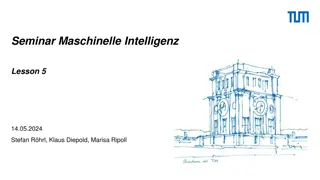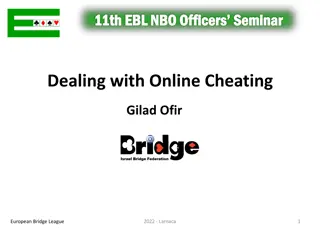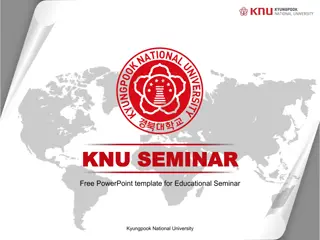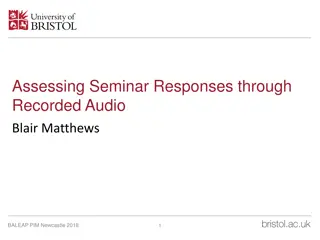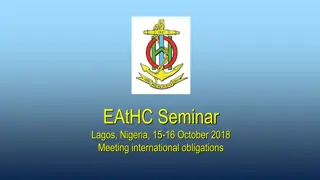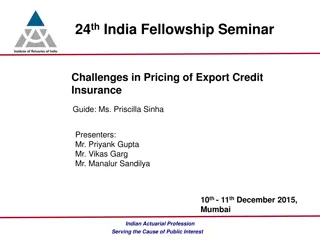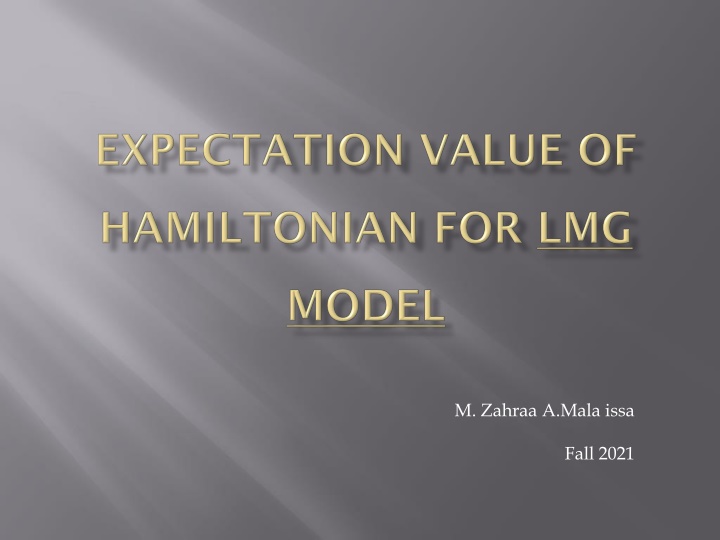
Quantum Many-Body Systems and Nuclear Pairing Models
Dive into the world of quantum many-body systems and nuclear pairing models through the exploration of the Lipkin-Meshkov-Glick model and its applications in explaining phase transformations in nuclei and quantum information. Learn about the probabilistic expected values of measurements and the role of nuclear pairing in nuclear structures.
Download Presentation

Please find below an Image/Link to download the presentation.
The content on the website is provided AS IS for your information and personal use only. It may not be sold, licensed, or shared on other websites without obtaining consent from the author. If you encounter any issues during the download, it is possible that the publisher has removed the file from their server.
You are allowed to download the files provided on this website for personal or commercial use, subject to the condition that they are used lawfully. All files are the property of their respective owners.
The content on the website is provided AS IS for your information and personal use only. It may not be sold, licensed, or shared on other websites without obtaining consent from the author.
E N D
Presentation Transcript
M. Zahraa A.Mala issa Fall 2021
We consider LMG model of quantum many- body systems. After rewriting Lipkin- Meshkov-Glick with pseudo spin operators Expectation value of Hamiltonian obtained.
That is the probabilistic expected value of the result(measurement) of an experiment. It can be thought of as an average of all the possible outcomes of a measurement.
For studying Quantum many body systems scientist use two level systems. These models can be numerically diagonalized for every dimensions. An example is Lipkin- meshkow- Glick model(LMG). The LMG model, describes two shells for nucleons and interaction between them in different shells.
Nuclear pairing plays an important role in different single-particle and collective aspects of nuclear structures. Several models are proposed for pairing, such as Richardson model, double beta decay and LMG.
Schematic illustration of the different types of nucleon pairs with orbital angular momentum L=0. The valence neutrons (blue) or protons (red) that form the pair occupy time-reversed orbits (circling the nucleus in opposite direction). If the nucleons are identical they must have anti-parallel spins a configuration which is also allowed for a neutron proton pair (top) The configuration with parallel spins is only allowed for a neutron proton pair (bottom).
LMG MODEL This model is offered in 1965 for explaining phase transformation in nucleus. Then is used for quantum information and quantum phase transformation. In this model, N particles can distribute themselves on two N-fold degenerate levels
Expectation value of Hamiltonian < ? ? | H | j,m > = En?? ,??? ,? J+| j,m > = ? ? ? + ? + 1 |?,? + 1 > J_ | j,m > = ? + ? ? ? + 1 |?,? 1 > HLMG | j,m > = E0 J0 +? ? ? ?+?+1 (? ? 1)(?+?+2)| j,m+2 > + 2 . ?+? ? ?+1 ?+? 1 ? ?+2 | j,m 2 > ) + ? ( 2 ( j2 m2 ) (j m + 1 ) (j+m+ 1) |j,m> 2( 2 . 2
< ? .. (3-12) If m' = m , j' = ? ?? ,??? ,?=1 If not ?? ,??? ,?=0 ? | H | j,m > = En?? ,??? ,? < j, m | H | j,m > = E0 J0 +? 2 . + m + 1 ) ?? ,? 2( 2 . ? ? ?+?+1 (? ? 1)(?+?+2)?? ,?+2+ 2( 2 ( j2 m2 ) (j m + 1 ) (j ?+? ? ?+1 ?+? 1 ? ?+2?? ,? 2 + ? If m'= m+2 < j, m' | H | j,m > = E0 J0 +? 2( 2 . ? ? ?+?+1 (? ? 1)(?+?+2) If m'= m-2 < j, m' | H | j,m > = E0 J0 +? 2( 2 . ?+? ? ?+1 (?+? 1)(? ?+2) If m'= m < j, m' | H | j,m > = E0 J0 +? 2( 2 ( j2 m2 ) (j m + 1 ) (j m + 1 )
j=input('j') hold on; for m=-j:1:j E1= sqrt(j-m).*(j+m+1).*(j-m-1).*(j+m+2) E2= sqrt(j+m).*(j-m+1).*(j+m-1).*(j-m+2) E3= (j.^2-m.^2).*(j-m+1).*(j+m+1) m plot(m,E1,'r--') plot(m,E2,'b') plot(m,E3,'k') hold on; end; hold off; xlabel('m') ylabel('E') title('Execptation Value Of Hamiltonian')
In these notes after briefly review the Pseud-Spin operators we have tried to provide an introduction to the Lipkin Hamiltonian and some of its elementary physics. We have seen how to write the model down and understand its behavior .We have simply pointed to more sophisticated numerical methods and not mentioned We get a first insight into the Lipkin Hamiltonian by considering its site. We solved this Hamiltonian by extracting the Expectation function. These expectation value integral are important in quantum mechanics. They provide us with the average values of physical properties e.g. like energy, momentum, or position) because in many cases precise values cannot, even in principle, be determined. If we know the average of some quantity, it also is important to know whether the distribution is narrow, i.e. all values are close to the average, or broad, i.e. many values differ considerably from the average. The width of a distribution is characterized by its variance. Finally we plot their figures with Matlab software too. As we know this software helps us to get our purposes more easily. Their figures go up and go down. We consider j=99, it is optional. When m'= m expectation value is higher than when m'= m+2 or m'= m-2. And the high point of m'= m is the point that the figures of m'= m+2 and m'= m-2 cut together. It is at m=0.
[1] Introductory Nuclear Physics ,Kenneth S.Krane, (Springer-Verlag, New York, 1987). [2] R.W. Richardson, Phys. Rev. 159 (1967) . [3]. R. W. Richardson, Phys. Rev. 144 (1966) . [4] R.W. Richardson, Phys. Rev. 141 (1966) . [5]. H. J. Lipkin, N. Meshkov and A. J. Glick, Nucl. Phys. 62 () 188. [6]. N. Meshkov, A. J. Glick and H. J. Lipkin, Nucl. Phys. 62 (1965) 199. [7] A. J. F. Glick, H. J. Lipkin and N. Meshkov, Nucl. Phys. 62 (1965) 211. [8] Ring and P. Schuck, The Nuclear Many-Body Problem (Springer-Verlag, New York, 1980). [9] Co , G., & De Leo, S. (2018). Analytical and numerical analysis of the complete Lipkin Meshkov Glick hamiltonian. International Journal of Modern Physics E, 27(05), 1850039. [10]Dukelsky, J. (2013). The Lipkin Meshkov Glick model as a particular limit of the SU (1, 1) Richardson Gaudin integrable models. Nuclear Physics B, 870(2), 421-443. [11] Morita, H., Ohnishi, H., da Provid ncia, J., & Nishiyama, S. (2006). Exact solutions for the LMG model Hamiltonian based on the Bethe ansatz. Nuclear Physics B, 737(3), 337-350. [12] Pomorski, K., & Dudek, J. (2003). Nuclear liquid-drop model and surface-curvature effects. Physical Review C, 67(4), 044316. [13] Som , V. (2018). From the liquid drop model to lattice QCD. The European Physical Journal Plus, 133(10), 1-22. [14] Morita, H., Ohnishi, H., da Provid ncia, J., & Nishiyama, S. (2006). Exact solutions for the LMG model Hamiltonian based on the Bethe ansatz. Nuclear Physics B, 737(3), 337-350. [15] Claeys, P. W., Caux, J. S., Van Neck, D., & De Baerdemacker, S. (2017). Variational method for integrability-breaking Richardson-Gaudin models. Physical Review B, 96(15), 155149. [16] Claeys, P. W., Van Neck, D., & De Baerdemacker, S. (2017). Inner products in integrable Richardson-Gaudin models. SciPost Phys, 3, 028. [17] Dukelsky, J., Pittel, S., & Sierra, G. (2004). Colloquium: Exactly solvable Richardson-Gaudin models for many-body quantum systems. Reviews of modern physics, 76(3), 643. [18] Frank, A., Isacker, P., Jolie, J., Jolie, J., & Van Isacker, P. (2009). Symmetries in atomic nuclei. Springer New York.





